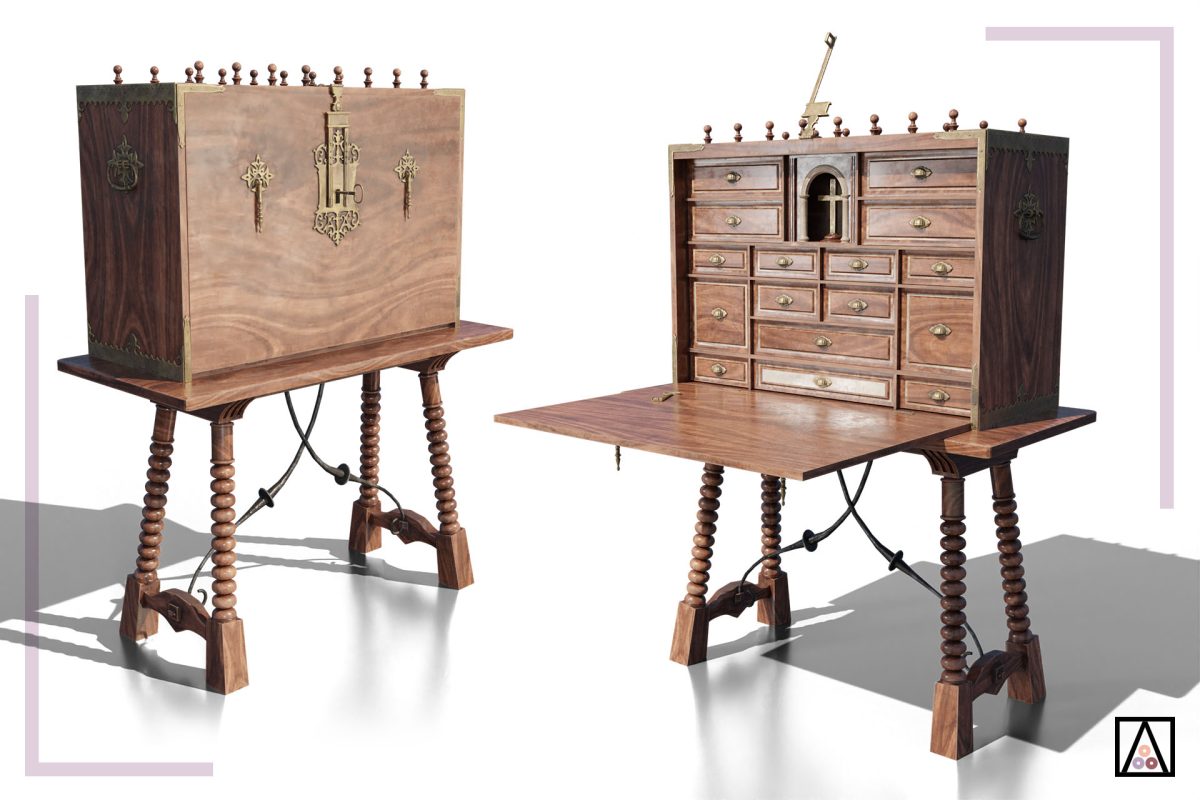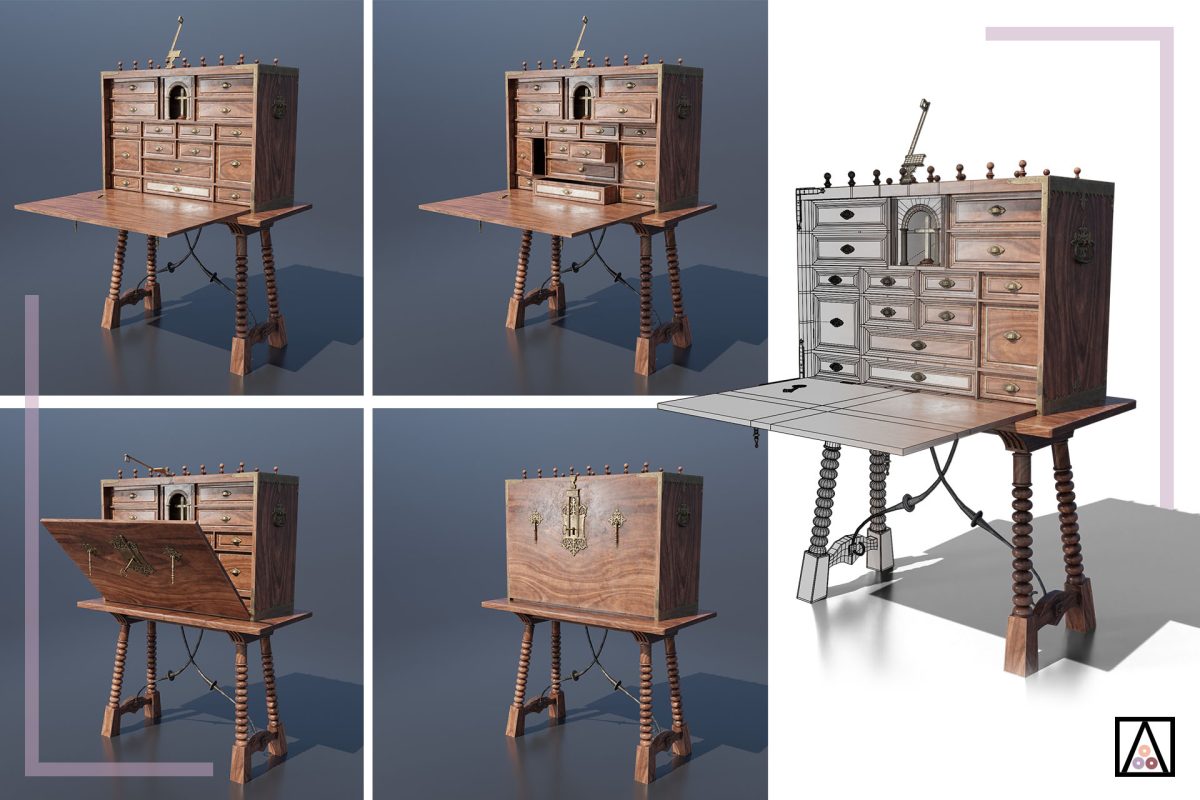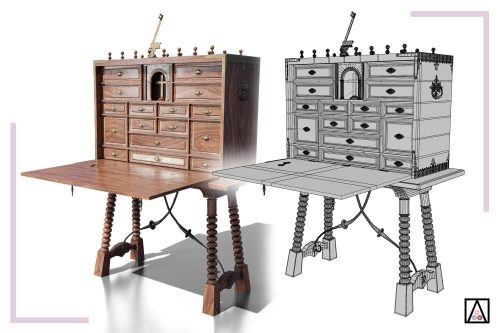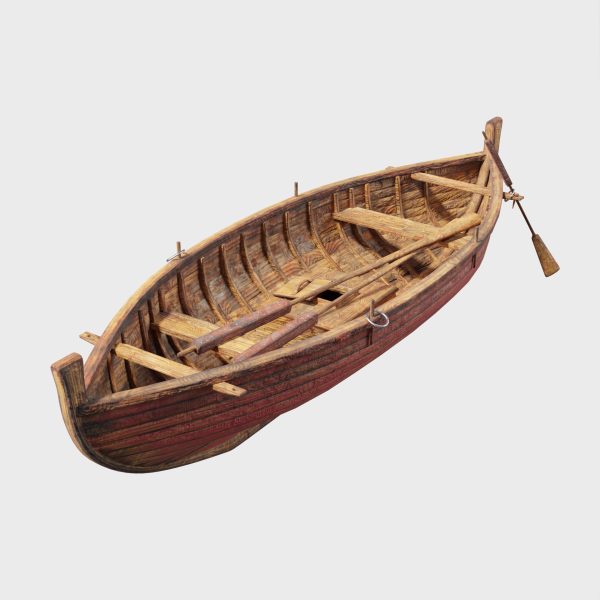The desk or bargueño was a wooden piece of furniture, with metal, ivory or stone ornaments, used for writing and for storing or filing documents, writing utensils and valuables. The term bargueño began to be used to refer to the Spanish writing desk in the 19th century, under the premise of its possible origin in the town of Bargas (Toledo), although this is now ruled out.
They began to be widely used in aristocratic environments in the second half of the 16th century and became tremendously popular throughout the 17th century. They were usually placed on table-like supports: foot of bridge or taquillón. The bargueño represented here was made for the 3D virtual reconstruction of the Palace of the Marquises of Berlanga de Duero.
LOD0: 106K Poly / 212K Tris
LOD1: 83K Poly / 106K Tris
LOD2: 61K Poly / 64K Tris
LOD3: 32k Poly / 35K Tris
Game Ready Model
Formats: .FBX; .OBJ; .blend.
PBR materials (JPG/PNG)
Texture maps: Base Color, Normal Map, Metallic, Roughness, AO, Height.
Texture resolution: 1K, 2K and 4K.
Rigged: Sí
Animated: Sí
Mask for color alternatives: No
Jorge García de PedroPablo Aparicio Resco
AGUILÓ ALONSO, M.P. (1993): "El mueble en España, siglos XVI-XVII.". Antiqvaria. Madrid.
AGUILÓ ALONSO, M.P. (2018): "Escritorio y bargueños españoles". Ministerio de Economía, Industria y Competitividad. Madrid.
MALMANGER, N. (2004): "El bargueño, mueble español por excelencia", Boletín de información técnica AIRIM, Nº 228, pp. 44 - 46.
MONTORO GUILLÉN, A. (2022): "Pieza al detalle: Escritorio", File of the Casa Cervantes Museum Collection. https://www.culturaydeporte.gob.es/dam/jcr:ff43a284-cba1-4a74-baef-a6499d742406/agosto-escritorio.pdf (Accesed 03/03/2023)
PIERA, M. (2012): "La colección de escritorios de Salamanca del Museo de Artes Decorativas de Barcelona", en Estudi del Moble, No16, pp. 18 a 27.

















